
It’s about 10 am, about 24 hours into the boat trip, when I notice this worker uncoupling the containers. We must be arriving in port soon. Behind the worker and the containers, that’s a lot of ocean!

I like this night view of the Salvia Maru (さるびあ丸) ship that goes from Tokyo to the distant islands administered by the Tokyo Metropolitan Government, including Oshima off the Izu peninsula and Ogaswara, which is a 25 hour trip by boat with no airplane service. This boat looks kind of small for traveling in the Pacific Ocean, doesn’t it? At the Hamamatsucho pier.
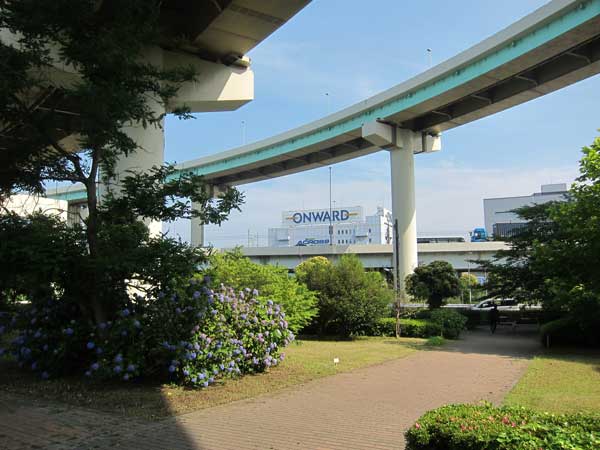
Leaving the Tatsumi Metro station, I cross over one highway on a pedestrian bridge, while passing below several elevated highways intersecting with flyovers.
This Onward sign on top of a warehouse feels like a personal extortion to move through this jumble of smog and burning fuels. Onward also seems to capture this part of Tokyo’s role as a place of distribution by ship and tractor trailer. In this frenzy of “logistics,” I always wonder what’s being transported and to whom.
Fortunately, the trees planted decades ago muffle the noise somewhat, and part of this marginal land is used as a park, community vegetable garden, and Olympic level swimming pool.
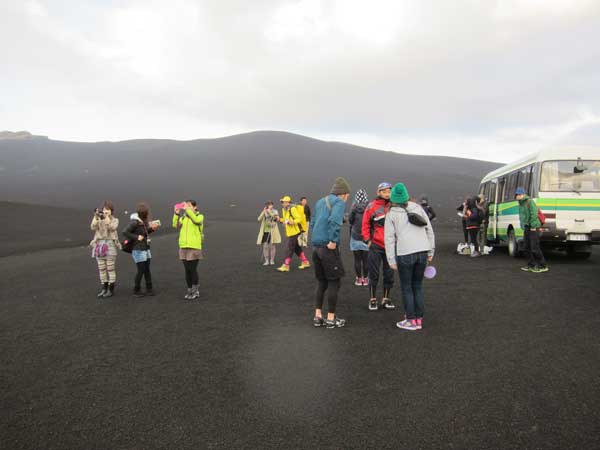
DId you know that Oshima island, off the coast of Izu, is part of Shinagawa ward? From the pier near Hamamatsucho, it’s an eight hour overnight ride on a slow and rather large boat. I recently went with Paper Sky’s Bicycle Club.
Highlights included watching the sun rise at black lava rock “desert” atop the volcano, fun and fashionable cyclists in their twenties, thirties, and forties, the slow over-night boat ride, two onsens, a small port made from a volcanic crater. We saw the end of the camellia season, the blooming of Oshima cherry trees, and ate ashitaba leaf vegetable. Dai dai cocktails cmobined local citrus with booze.
I am now even more impressed with Paper Sky, which is a travel magazine and also the hub of mountain climbing, food, book, and bicycle clubs. My fellow travelers were an interesting mix of bicycle sellers, magazine editors, serious and hobby cyclists, photographers, and creative types. I was surprised that the rental bikes were all Bruno bikes, which have small tires, great colors, and are excellent for city biking and mid-range touring.
With its real world events and groups, Paper Sky’s publisher, Knee High Media, is clearly thinking about a new type of publishing beyond paper, the web, and smart phones.
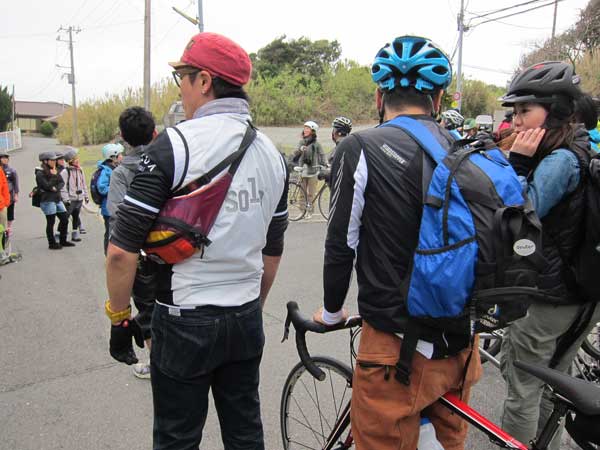
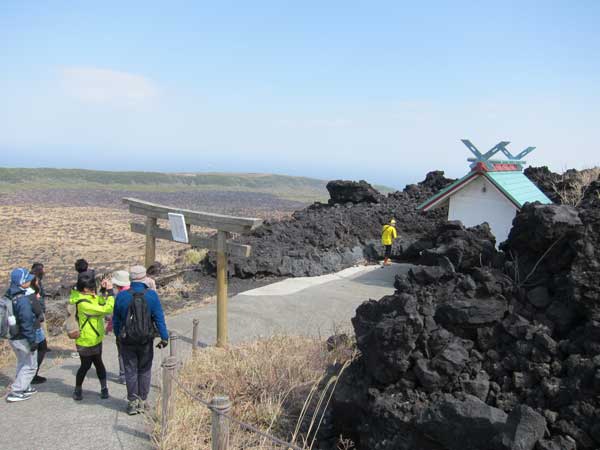
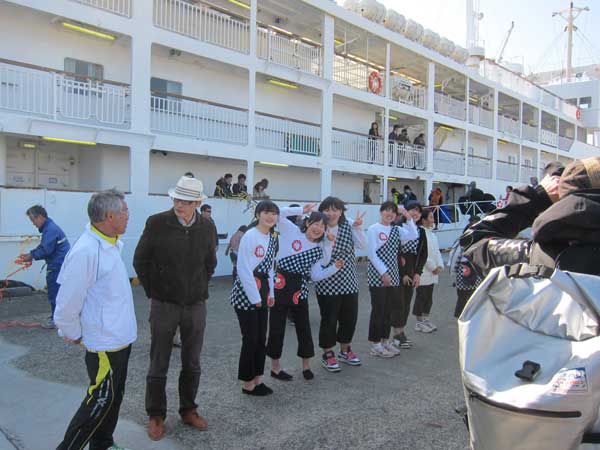
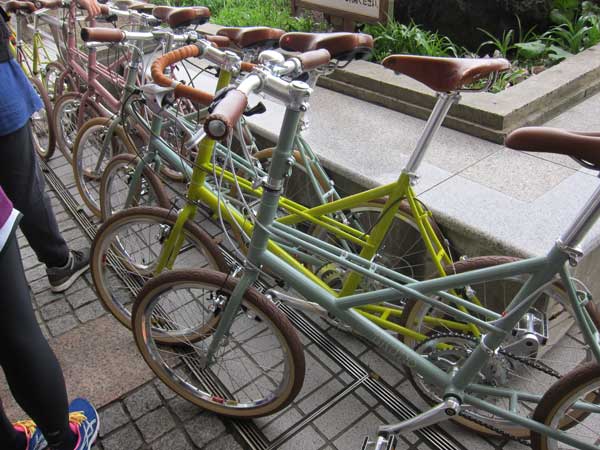

都市計画が良くないのに、東京生活は素晴らしいと友達に話します。最近、TEDxSeedsに行って、横浜の港でまた遊びました。大さん橋という国際埠頭はきれいな建築や商売や水辺公園を組み合わせています。横浜がこんな新しい開いたスペースを作られるならば、東京もできるはずです。
I often tell people that Tokyo’s urban life is wonderful in spite of city planning. On the one hand, this view valorizes the activities of everyday people in making public spaces alive with plants, care, and community. On the other hand, it also expresses a resignation that city leaders cannot or will not improve city life.
Recently I attended TEDxSeeds at Yokohama’s restored port. In addition to wonderful historic buildings that are preserved and reused, the entire port area has a revitalized public park and waterfront promenade. One of the most spectacular public places is the undulating rooftop park above the International Ferry Terminal, designed by London’s Foreign Office Architects; in Japanese it’s called Osanbashi.
This is a bold example of creating a new open space that combines commerce (the business of loading and unloading passenger ships) with a place for residents and visitors to stroll and relax on the waterfront. I heard one Yokohama resident refer to the building as “the whale” building because of its curvy surface.
If Tokyo city leaders thought big, what kind of new public spaces could be created here? How could some of its past be made visible and accessible today? What natural resources could be reclaimed with great architecture and some vision? It seems in terms of city planning that Japan’s other cities are more dynamic and more forward-looking than its capital.
